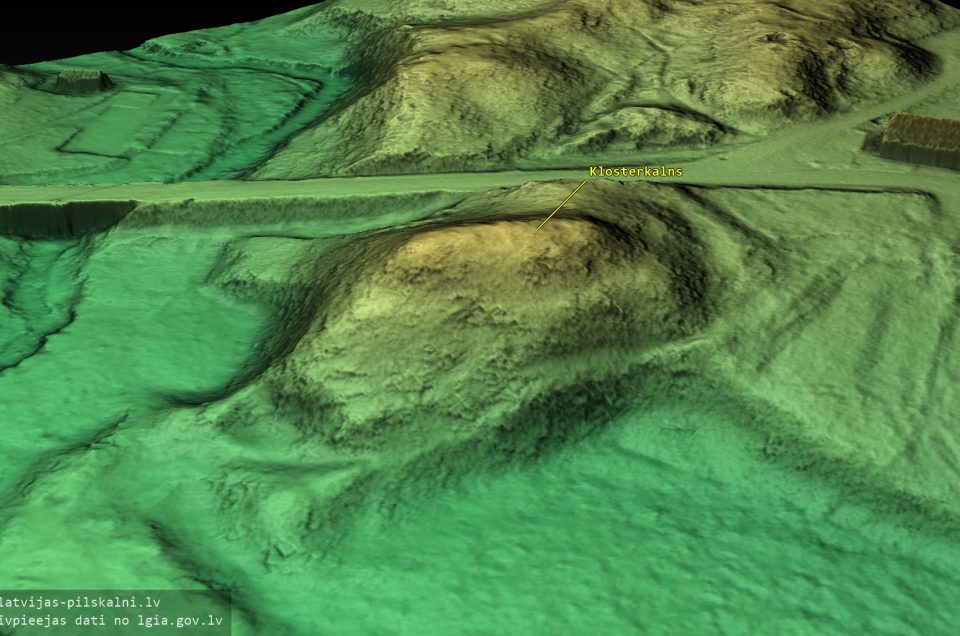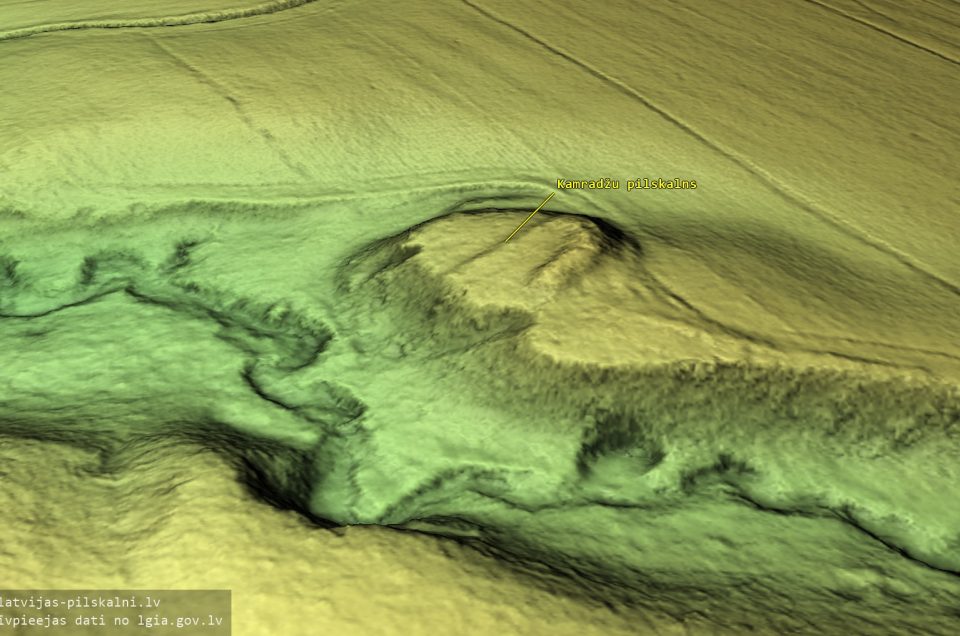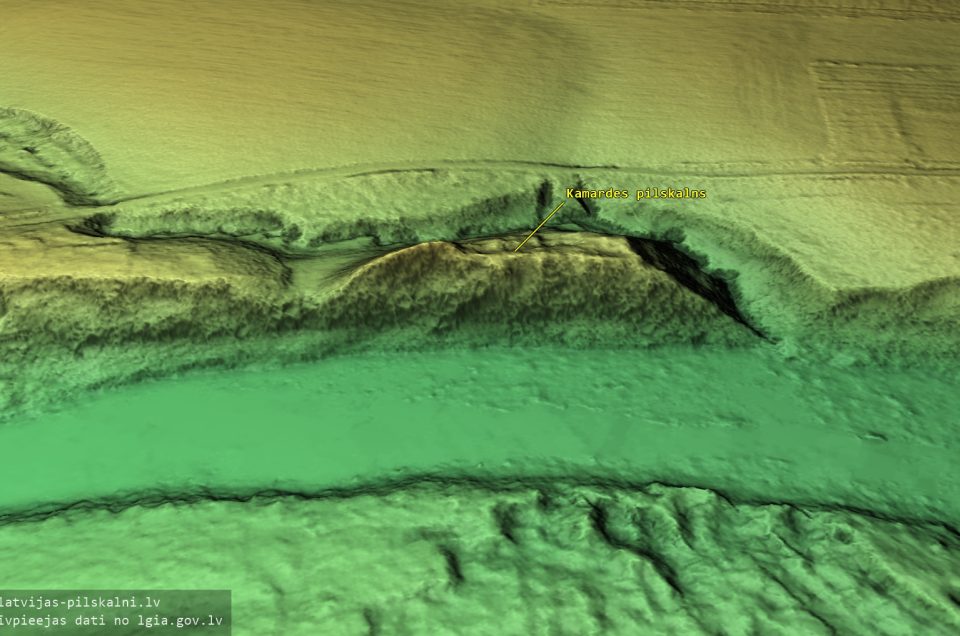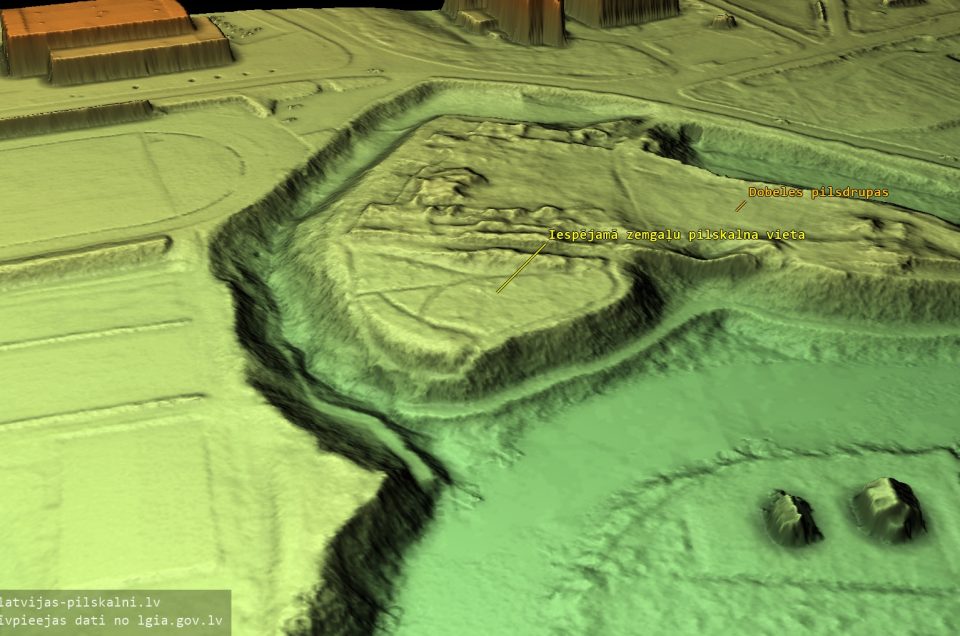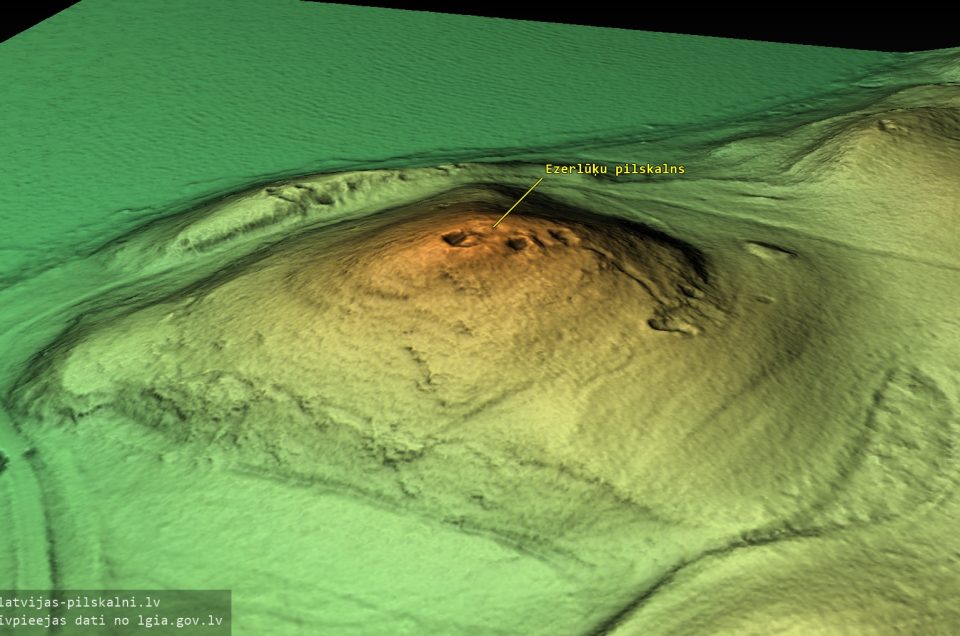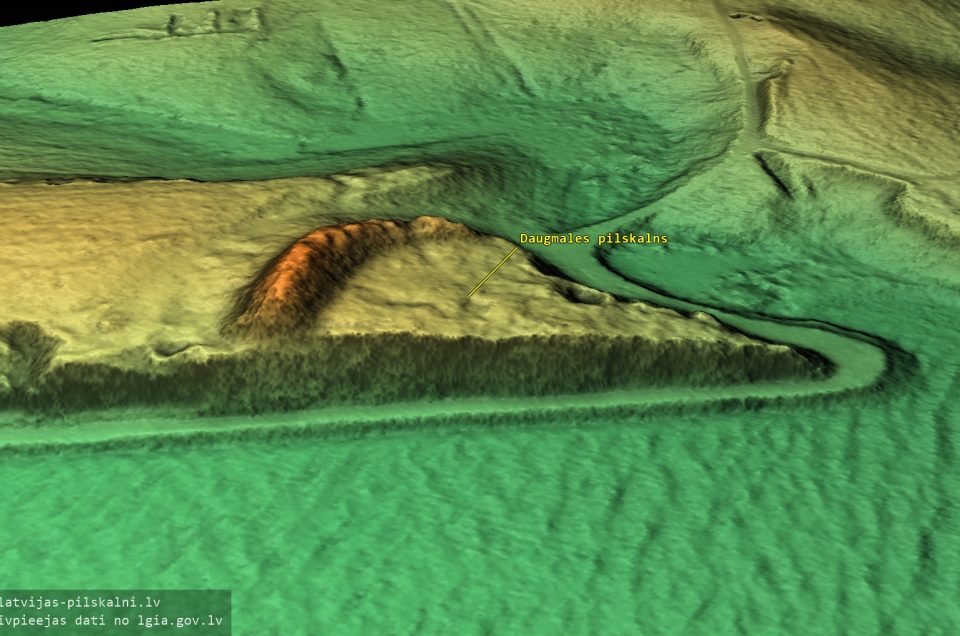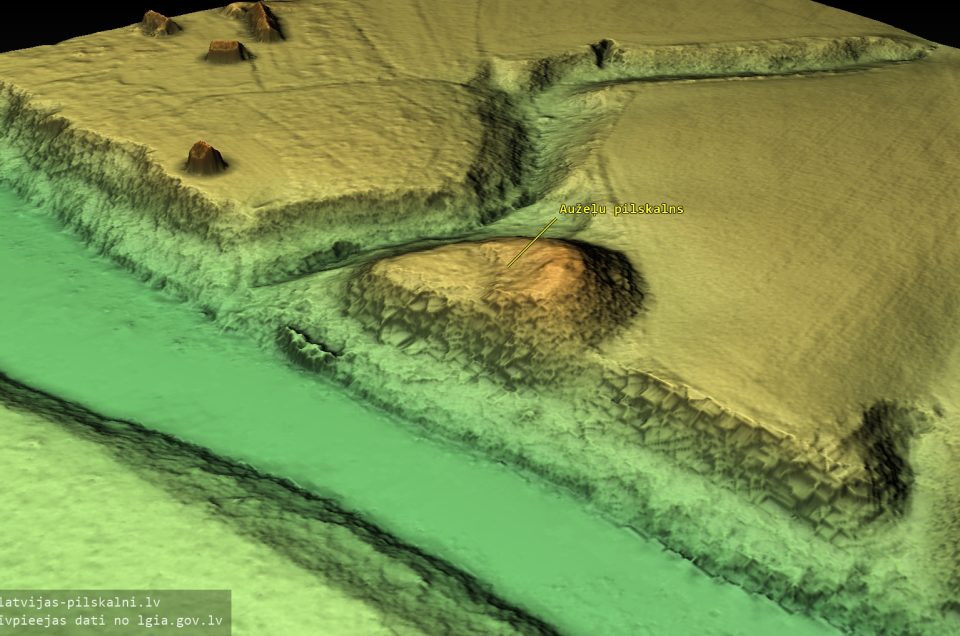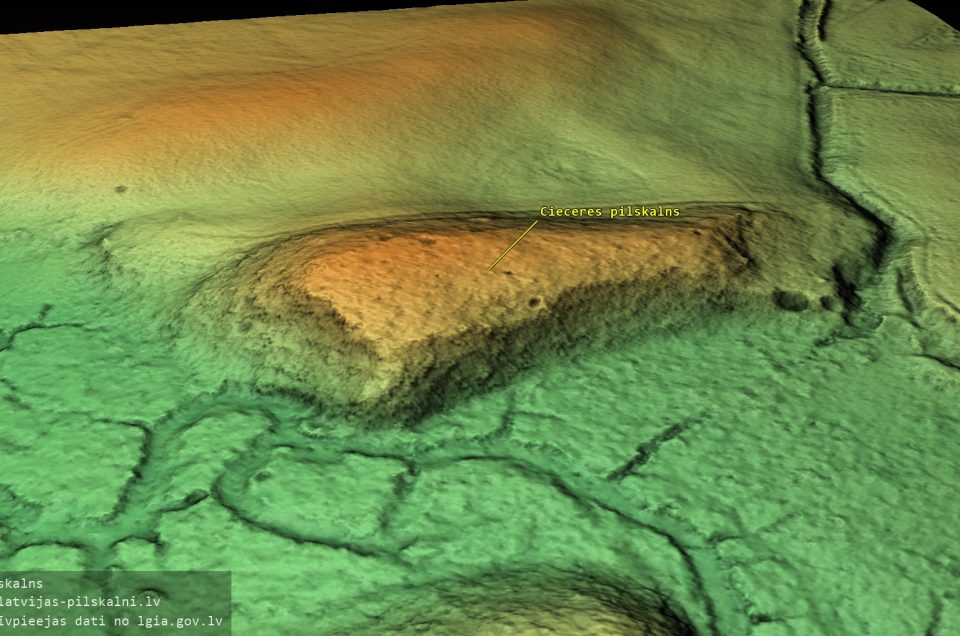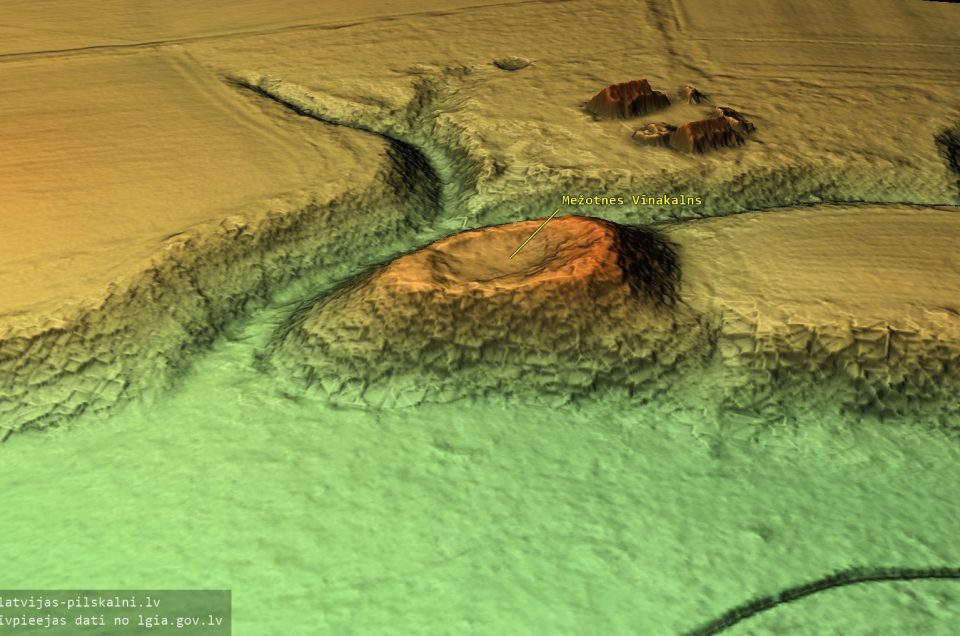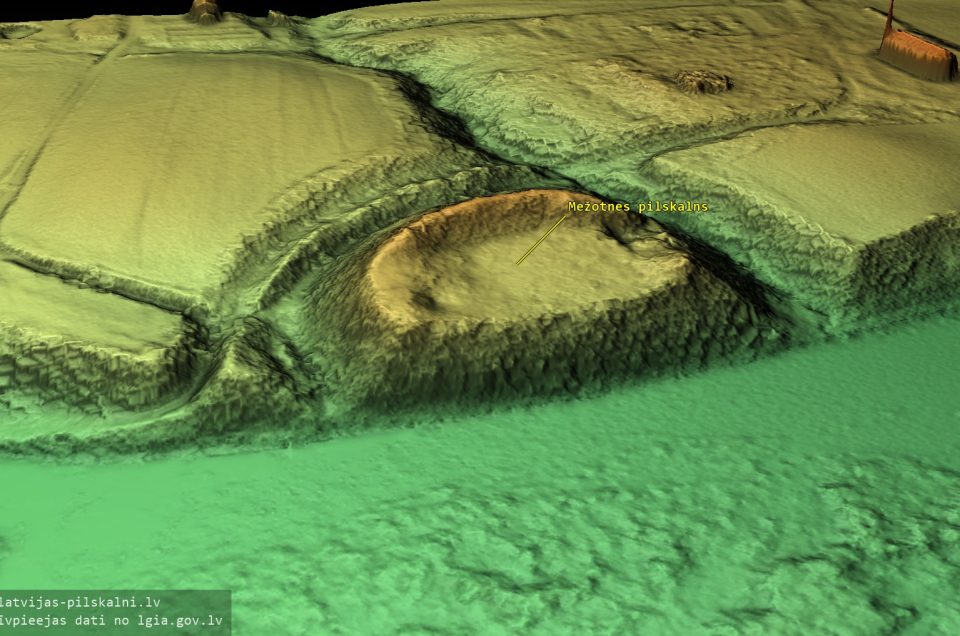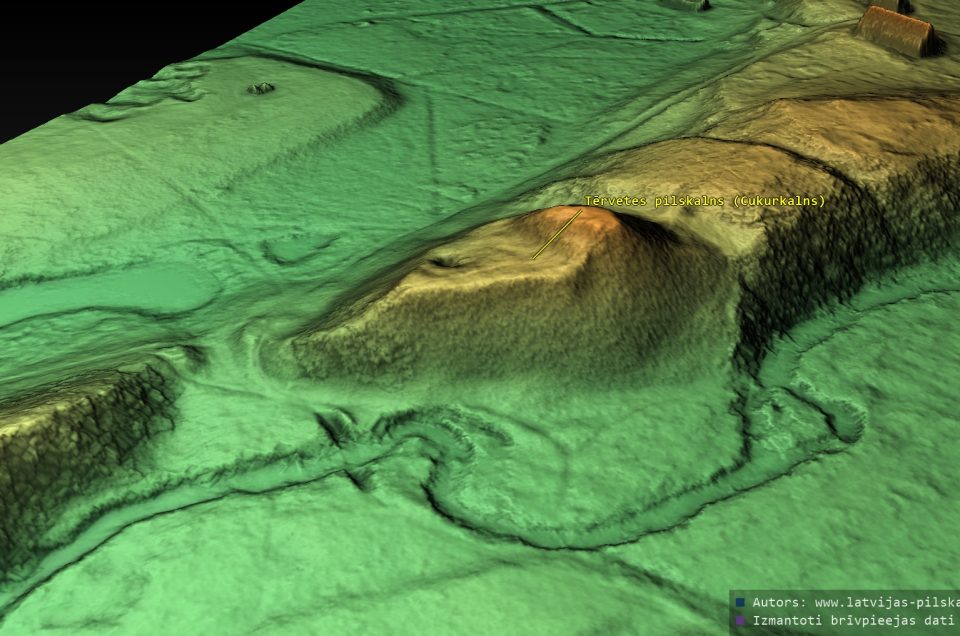Zemgale region
The Dobele castle is first mentioned in records in 1254 as a fortified timber castle, the administrative centre of the Semigallian Dobele district. Intense battles against German crusaders took place in the Dobele vicinity during the Livonian crusades. Semigallians fiercely resisted the enemy, who could not conquer the castle.
Daugmale hillfort is an ancient centre of trade and craft on the left bank of the Daugava river near the Tīči and Pukstiņi homesteads. Several authors believe that a port referred to in historical documents as Portus Semigalliae, was located at the foot of the hill where the river Varžupīte flows into the Daugava. Archaeologists have found evidence that the hillfort has burned at least 14 times during its existence.
On the left bank of the Mēmele River, in Ceraukste municipality, in the fields of Aužeļi and Turki homesteads, we see an artificial mound, named “Pilskalns” (“Hillfort”). Indeed, this is a typical hillfort, constructed on a headland, which has formed between a ravine of a brook and the steep bank of the Mēmele. The headland is separated from the flat field to the north by a ditch, which is currently 2 m deep, and a 4 m high earthwork.
In Kuldīga county, Ciecere municipality, 3 km south-east of the Lielciecere manor, on the grounds of the Pilskalni homestead there is a place known as “Hillfort”. The hilltop is 110 m long and at the southern end 50 m wide.
The Wine Hill is a fortified mound half a kilometre south of Mežotne hillfort. A steep ridge connects the hillfort and the Wine Hill, delimiting the Lielupe river flood meadows to the west. This ridge is the former bank of the Lielupe, remaining in place as the river receded.
Mežotne hillfort (Latin: castrum Mesiothe), also known as Viesturs’ Hill, is located in Rundāle municipality, across from the centre of Mežotne town, on the left bank of the Lielupe river. According to the Livonian chronicles, the main castle of the Semigallian land of Upmale stood here until 1270. After its destruction, to defend against the Lithuanians, the Livonian order built the Mežotne castle, which existed for a short time (ca. 1321-1346).
Tērvete hillfort (also known as Cukurkalns, “Sugar Hill”) is located in Tērvete village of the Tērvete municipality, on the right bank of the Tērvete river. Until the 13th century, the Semigallian rulers’ castle on this hill was the administrative centre of the Tērvete district. The mound and the ancient settlement are a state-protected archaeological monument.

-
Tīrumviekšeļi hillfort J.Döring V.Leitholds Kārļa hill Gaiļa hillfort Ezerlūķi hillfort J.Asaris Kurmāle hillfort Vējiņi hillfort Gorodoka hillfort Kamarde hillfort Kamradzes hillfort Campaign "100 Latgale hillforts" T.Nigulis Marga hill Dignāja hillfort J.Baldurs Sauka hillfort G.Kalniņš Imuļu hillfort Klosterkalns hillfort Gramzda hillfort Sāruma hill Stanovišku hillfort Peiteļi hillfort Sermīte hillfort M.Atgāzis Kaupo Big Castle Aderkašu hillfort Blaževiču hillfort Caunu hillfort Kiln Hill E.Brastiņš Kaldabruņa hillfort Riekstu (Nuts) hill Dobele hillfort Ķētu hillfort Stupeļu hillfort J.Urtāns Ķīķerkalns

Šis darbs ir licencēts ar Creative Commons Attiecinājums-Dalīties līdzīgi 4.0 Starptautisko licenci.
